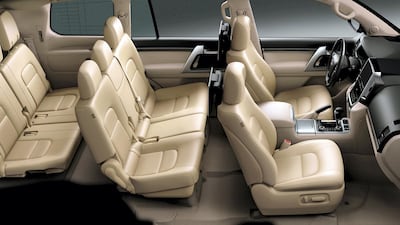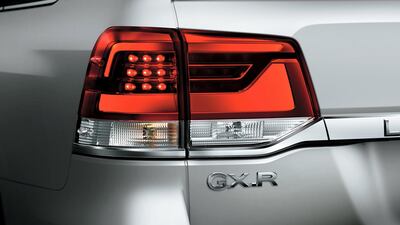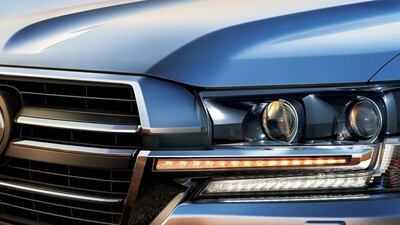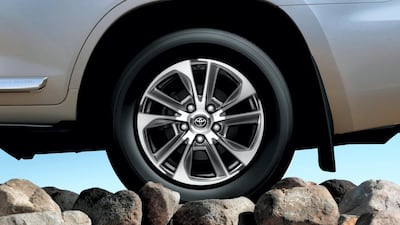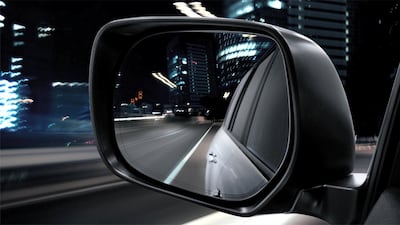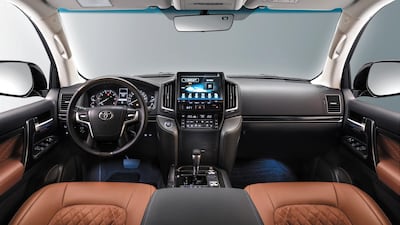Whether you're driving up Jebel Hafeet, cruising the Abu Dhabi Corniche or doing a daily commute between emirates, any great drive can turn into a miserable one if you suffer from back pain and fatigue. One thing that helps combat this in the UAE is our great roads.
Many are new and there is plenty of space on the highway, but even the newest road won't stop the many forces you experience in a car – from acceleration to mechanical vibrations – contributing to pain on journeys of more than 20 minutes.
For tips on how to combat this, we turned to Paul Cheung, president of the National Chiropractic Sports Council UAE, who worked with Formula One drivers before moving to Dubai's Up and Running Medical Centre to help with our aches and pains.
What’s the first thing we can all do to stop back pain and reduce fatigue while driving?
To minimise postural stress and reduce fatigue, the first thing to think about are the options on seating positions in the cabin. Given the small amount of space in the car, it is surprising how many adjustments are possible, although this is dependent on the model and specification of the vehicle. Even in the most basic form, the backrest should not be bolt upright. The vertical downforce on the lower lumbar spine and sacroiliac joints is at maximum pressure when seated this way. When you recline the seat back a few degrees, the rest of the spine from the mid thoracic / shoulder blade area can come into contact with the seat material, distributing and dissipating the weight from the lower back.
How much does our hand position on the wheel impact back pain?
Professional drivers will tell you all about how important hand positioning on the steering wheel can be. When you place your hands on the wheel (at the 10 and 2’o clock position), you should be close enough to leave a 45-degree bend in the elbow. This is vitally important for two reasons: it reduces the muscular loading on the neck and shoulder muscles when you push and pull the wheel through turns and, more importantly, it creates a natural suspension in the fold of the arm, reducing the risk of whiplash if an accident occurs.
_________________
Take a look at Toyota's 2020 Land Cruiser tearing up UAE terrain:
_________________
What can we do to protect ourselves if we get into an accident?
Firstly, you must drive with your hands on each side of the wheel, because if you still drive with one hand on top, you are likely to end up with a broken wrist and / or nose if the airbag goes off. After the airbag breaks your wrist, the pressure from the explosives will end up with you punching yourself in the face.
Also, as with your arms, make sure your legs are bent, even when the pedals are fully depressed. If you are stretching and can’t comfortably place your heel on the floor, your hips and pelvis will be out of place and this can cause major complications for your posture and, worse, result in a crash.
Oh, and please remember the headrest is not a pillow, it is a safety device to reduce whiplash if you are unfortunate enough to be rear-ended. Or, in the case of a frontal impact, it will reduce the backward recoil from the initial frontal direction of whiplash.
Why don’t F1 drivers suffer from fatigue as much as daily commuters?
In F1, driver ergonomics is vital for the pilot to perform at their maximum level. Each seat is moulded to the driver's body and a carbon-fibre shell laser-etched to perfection so it fits into the car without any room for movement.
The driver is strapped into the seat very tightly, so there is no lateral movement when cornering, nor is there any motion forwards or backwards. This reduces the need to use up energy in the muscles trying to keep you in the seat.
The posture of the driver in most single-seater racecars is similar to sitting in a bathtub with your feet up near the taps. The legs are “sleeved” into a cushioned carbon-fibre tub, similar to the nose-cone of a missile, where their feet can operate the pedals.
All of this means the driver is cushioned during any sort of impact. It also reduces fatigue during long periods where they experience high levels of G-force.
Do you have any further tips that might help us on a long drive or daily commutes?
There are plenty of techniques we can adopt so we can enjoy driving our cars on long or short journeys. Open the window or the sunroof to let in fresh air, but perhaps not in the height of the summer. Don’t let yourself get too hot, either, as reducing the cockpit temperature when feeling tired can help you stay alert.
Better still, stop the car at the service station, get out and walk for a few minutes to get the blood circulation going.
Additionally, if you have time, order a coffee, drink a tea or fill up with water to rehydrate, as this will help to keep you alert. If you are in the mood, pop on some upbeat music, but nothing too lively, because you don’t want to be distracted from what other road users are doing.


